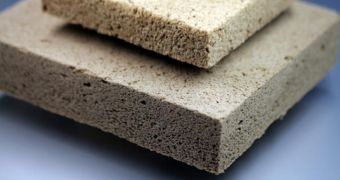Scientists working with the Fraunhofer Institute for Wood Research, WKI in Germany claim to have developed a so-called wood foam that they hope will one day replace the materials currently used to insulate buildings.
The researchers explain that the chief reasons that the constructions industry might want to replace current insulations with their wood foam is because, unlike the former, their material is free of toxic chemical compounds.
This makes it more environmentally friendly and less likely to constitute a threat to the environment, the Fraunhofer Institute for Wood Research specialists argue. Clean Technica tells us that, in order to create the eco-friendly insulating foam, the scientists started by grinding wood up until this material came to have a very fine consistency.
The next step was adding gas meant to turn the very small wood particles into a frothy foam that hardened when force was applied, the same source tells us.
According to the specialists who worked on this project, substances that naturally occur in wood make the hardening process even easier than it would normally be.
“Our wood foam can be used in exactly the same way as conventional plastic spray foams, but is an entirely natural product made from sustainable raw materials,” specialist Volker Thole said in a statement.
“It’s a bit like baking, when the dough rises and becomes firm in the oven. This wood foam is a lightweight base material that can then be made into rigid foam boards and flexible foam mats,” he further detailed.
As surprising as this may sound, the Fraunhofer Institute for Wood Research scientists maintain that their wood foam behaves similarly to conventional plastic spray foams, despite the fact that their make-up is quite distinct.
As specialist Volker Thole put it, “We analyzed our foam products in accordance with the applicable standards for insulation materials. Results were very promising; our products scored highly in terms of their thermo-insulating and mechanical properties as well as their hygric, or moisture-related, characteristics.”
The researchers are now carrying out a series of experiments with their newly created insulating material and hope that it will not be long until they figure out which type of wood need be used in order to achieve the best results.
Besides, they wish to determine what the best way to produce wood foam on an industrial scale is. They explain that, if wood foam is to even stand a chance to replace conventional insulating materials, then being able to produce loads of it at a fairly low price is of utmost importance.

 14 DAY TRIAL //
14 DAY TRIAL //